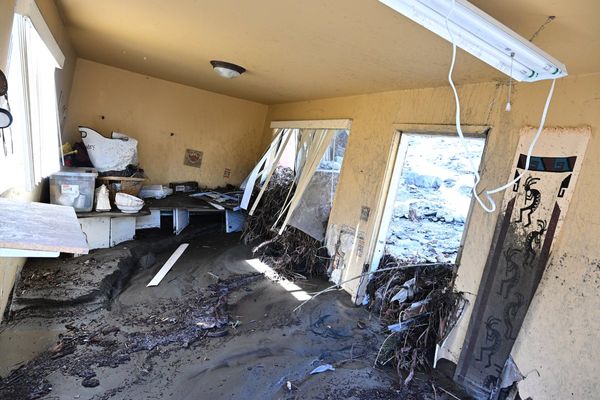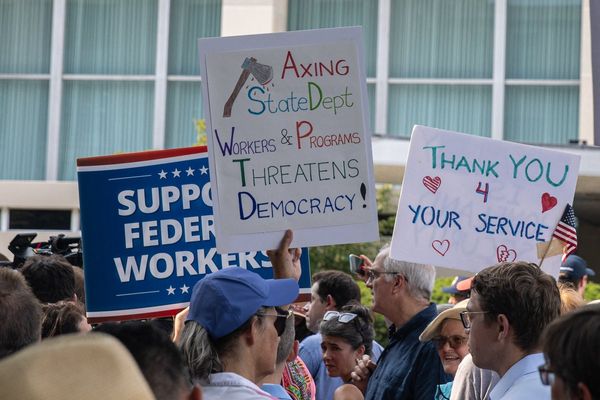
Australia’s electronic spy agency will double in size and ramp up its ability to launch its own offensive cyber operations as part of a $10bn national security budget pledge curiously dubbed Redspice.
But the funding is spread over 10 years and only $4.2bn will be spent in the first four-year budget cycle. Given the government is partly offsetting the package with savings from other parts of the defence portfolio, the cyber pledge is worth only $588.7m in new money in the first four years.
The money would allow the Australian Signals Directorate (ASD) to “keep pace with the rapid growth of cyber capabilities of potential adversaries”, the government said.
In a separate move, the government has budgeted an extra $1.2bn between now and the late 2030s towards a national space mission for Earth observation, “which will see Australia design, build, and operate four new satellites”.
While the cyber package reflects advice from security agencies about the increasing threats of attacks on critical infrastructure, it also fits the Coalition’s political desire to make national security a key issue in the looming election.
In a move that will do nothing to diminish criticism of prime minister Scott Morrison as being unduly focused on marketing, the government has created a buzzword for the initiative, Redspice – “Resilience, Effects, Defence, Space, Intelligence, Cyber and Enablers”.
Under the package, the ASD is expected to add 1,900 jobs over the decade, including data analysts, computer programmers and software engineers. The government said it would bolster Australia’s commitment to its Five-Eyes and Aukus partners “while supporting a secure Indo-Pacific region”.
While ASD on the whole will double in size, it is expected to triple its offensive cyber capabilities. The agency will also bolster its efforts to fend off cyber-attacks on Australia’s critical infrastructure, “being able to counter attack and protect our most critical systems”, according to Tuesday’s budget papers.
It will aim to “anticipate and deter a crisis and deliver asymmetric capabilities”. Budget papers revealed the cost of Redspice would be partially offset by savings in the Defence Integrated Investment Program, but those specific cuts were not immediately clear.
The treasurer, Josh Frydenberg, told parliament it was “the biggest ever investment in Australia’s cyber preparedness” and the lesson of history was that “weakness invites aggression”.
He said the world faced “uncertain times” – a message the government is increasingly amplifying as it warns voters against risking a change of government in May.
“Tonight, as we gather, war rages in Europe,” Frydenberg said.
He used his budget speech to launch a political attack on Labor, saying “those opposite allowed defence spending to fall to its lowest level since 1938”.
The Gillard Labor government did outline defence cuts in the 2012 budget while under political pressure to deliver a promised surplus, but then used its 2013 defence white paper to reinstate a commitment to spend at least 2% of GDP on defence each year.
In the lead-up to this year’s election, Labor leader Anthony Albanese has offered bipartisan support to the 2% minimum and has said big national security, defence and strategic issues are above politics.
The Coalition has previously faced accusations of talking tough on cybersecurity but failing to deliver. The Australian National Audit Office found last year that just a quarter of Australian government entities were compliant with the mandatory strategies to protect themselves against cyber threats.
After the establishment last week of a space command within the Royal Australian Air Force, the government is also pledging more funding to develop Australia’s space industry, to be led by the Australian Space Agency.
The minister for science and technology, Melissa Price, said the government wanted “more expertise and more jobs right here in Australia in this critical industry”.
“Developing and launching these first four Australian satellites will create the foundation of industry knowhow for more complex space missions next decade,” Price said.
The budget does not update the projected cost of Australia’s planned new nuclear-propelled submarines, which are subject to a joint study with the US and the UK. Aukus is mentioned as a “fiscal risk” in the budget papers, because the costs of the acquisition are yet to be assessed.
Nor does the budget outline the projected cost of cancelling the contract with French firm Naval Group.
But the government wants to secure additional land in Adelaide to build a construction yard for nuclear-powered submarines adjacent to the existing Osborne North shipyard.
It also reiterated that its plan to build a new submarine base on the east coast of Australia would be part of an estimated $10bn long-term investment in future submarine infrastructure. Earlier this month the government announced plans to recruit an extra 18,500 defence personnel by 2040 at a total cost of $38bn.
The budget also confirms the $156.5m cost of Australia’s support to Ukraine following its invasion by Russia in February, including $91m in “lethal and non-lethal military assistance”.
Against the backdrop of heightened concern in Canberra about a planned defence agreement between China and Solomon Islands, the government said it was delivering a record $1.85bn in Official Development Assistance (ODA) to the Pacific this year.
Solomon Islands will gain $161.1m in ODA in 2022-23, up from $156.4m this year.
The government also continues to pledge “temporary and targeted” additional funding to help the Pacific respond to Covid. The government said it would spend $65m building and maintaining a new complex for the Australian high commission in Honiara in Solomon Islands.
The government is ending the freeze on indexation of Australia’s overall ODA levels, meaning it will increase from $4bn in 2021-22 to $4.089bn in 2022-23.
In a sign of concerns about the personal safety of MPs and senators, the budget also includes $30m over four years to increase security at Parliament House in Canberra.
That includes improving CCTV, upgrading screening equipment and expanding the security operations room.







